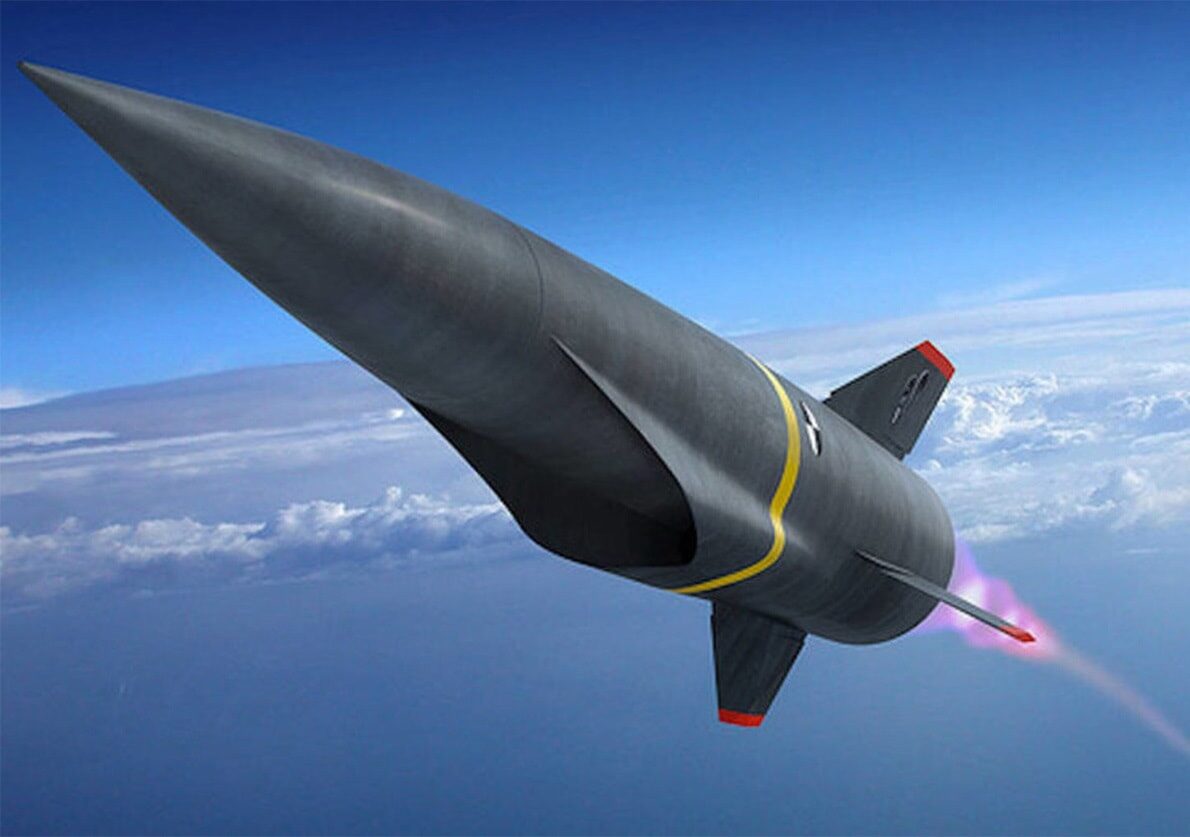Last week, the United States Air Force conducted a second hypersonic weapon test of its prototype AGM-183A Air-launched Rapid Response Weapon (ARRW). The weapon separated safely from the B-52H Stratofortress bomber, but the rocket motor did not ignite. It was the second unsuccessful attempted flight test of the hypersonic missile. In the previous failed flight test in April, the missile didn’t even leave the wing of the B-52H, to which it was attached.
What Happened?
“The Air Force conducted its second AGM-183A Air-launched Rapid Response Weapon booster flight test July 28. While it did not meet all flight objectives, the test demonstrated several first-time events as the program continues to track toward fielding a hypersonic capability in the early 2020s,” the Air Force Life Cycle Management Center’s Armament Directorate announced via a statement.
“Objectives for the test included demonstrating the safe release of the booster test vehicle from the B 52H and assessing booster performance,” the statement added. “An Edwards AFB B-52 released the ARRW test missile, dubbed Booster Test Vehicle 1b or BTV-1b, over Point Mugu Sea Range.”
According to the Air Force, the missile had cleanly separated from the aircraft and even successfully demonstrated the full release sequence including GPS acquisition, umbilical disconnect, and power transfer from the aircraft to the missile. The missile was also able to demonstrate fin operation and de-confliction maneuvers, which ensured a safe operation for the aircrew.
However, following the safe separation maneuvers, the rocket motor failed to ignite.
More Tests Coming
While the recent test was unsuccessful, the Air Force also announced that its ARRW team will continue to progress through the rapid prototyping effort. It will remain committed to the well-being of U.S. Air Force airmen and equipment, which requires striking a balance between prudent risk and rapid advancement of the program.
The Overall test plan was the same as it had been for the initial failed Booster Test Flight test (BTF-1), which took place in April, The War Zone reported. The test was reportedly intended to focus on validating the performance of the missile’s rocket booster, while also demonstrating the simulated separation of the weapon’s unpowered boost-glide vehicle payload.
“Developing first-of-its-kind missiles is difficult business and this why we test,” said Brig. Gen. Heath Collins, the Air Force program executive officer for weapons. “This is a critical capability for our Air Force and we have the very best team working to figure out what happened, fix it and move out to deliver ARRW to our warfighters as quickly as possible.”
Can the U.S. Catch Russia and China?
The goal of the ARRW program is to deliver a conventional hypersonic weapons capability to the U.S. warfighter in the early 2020s. The weapon system was designed to provide the ability to destroy high-value, time-sensitive targets. According to the U.S. Air Force, it will also expand precision-strike weapon systems’ capabilities by enabling rapid response strikes against heavily defended land targets.
However, so far, it seems that the U.S. has fallen behind near-peer adversaries in actually developing the technology. Russia and China have already achieved success in developing their own respective hypersonic weaponry. Russia has three hypersonic platforms – the Avangard, the Kinzhal, and the Tsirkon (Zircon) – all of which Russian Federation President Vladimir Putin has described as “invincible.”
Russia has conducted multiple successful launch tests of its Tsirkon from a guided-missile frigate, while there have been reports that the fifth-generation Sukhoi Su-57 fighter jet had been seen in tests carrying a prototype of the Kinzhal (Russian for “Dagger”). Additionally, the Avangard is a hypersonic intercontinental ballistic missile (ICBM) that can deliver both conventional and nuclear warheads. According to a BBC report, the first regiment of Avangard hypersonic missiles entered service in December 2019.

The Eurasian Times also reported that China has invested heavily in its development of hypersonic weapons, and claims to have successfully tested the DF-17, a road-mobile medium-range ballistic missile (MRBM), which was designed to launch a hypersonic glide vehicle (HGV).

EDWARDS AIR FORCE BASE, Calif. (June 12, 2019) B-52 out of EDW carries ARRW IMV asset for its first captive carry flight over Edwards Air Force Base. (U.S. Air Force photo by Christopher Okula)
It is said that “slow and steady wins the race,” but so far the U.S. has faltered while potential adversaries are sprinting ahead. This is one race the U.S. can’t afford to lose, so the Air Force must be hoping that the third time is the charm for the next ARRW test.
Peter Suciu is a Michigan-based writer who has contributed to more than four dozen magazines, newspapers and websites. He regularly writes about military small arms, and is the author of several books on military headgear including A Gallery of Military Headdress, which is available on Amazon.com.

